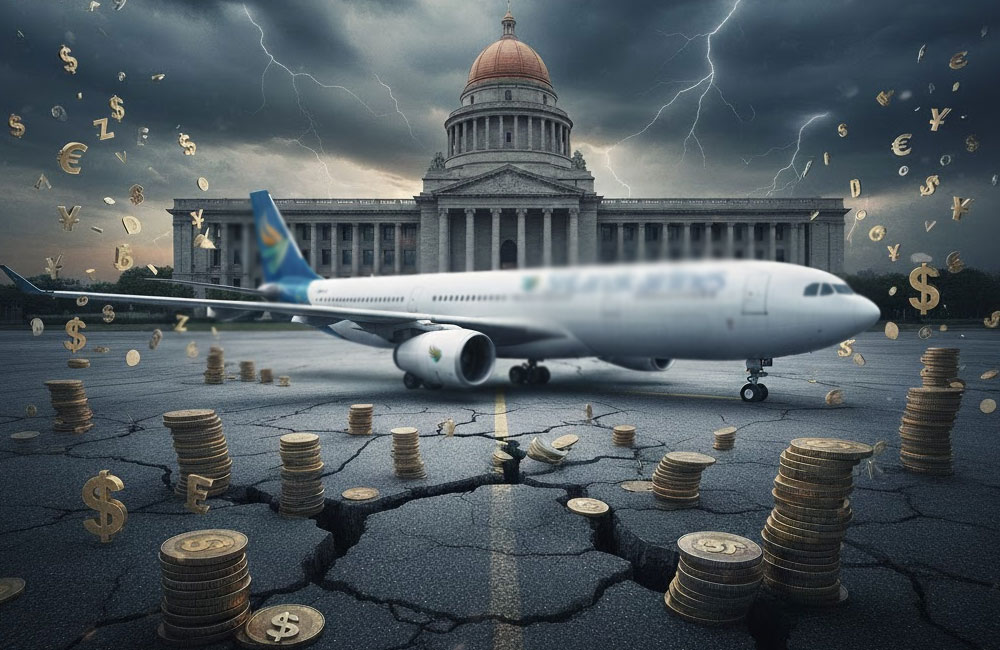Sri Lanka’s national airline is once again at the center of a costly financial rescue, with taxpayers poised to inject nearly Rs. 100 billion over the next five years to stabilize SriLankan Airlines, officials revealed. Of this, Rs. 25 billion will be pumped in during 2025 alone, raising concerns over the sustainability and economic impact of maintaining the state-owned carrier.
Deputy Treasury Secretary A.K. Seneviratne informed the Parliament’s Committee on Public Finance that the funds will be allocated as equity to cover sovereign-guaranteed bank loans, without accounting for additional costs linked to bond repayments. The Treasury currently backs loans totaling Rs. 50.675 billion, primarily from state banks including Peoples Bank and Bank of Ceylon.
The airline’s liabilities include approximately USD 210 million in foreign currency loans and around Rs. 30 billion in domestic rupee credits. These obligations are set for restructuring before the end of 2025, with repayments planned over five years, averaging Rs. 20 billion per year. Interest rates on rupee loans, previously as high as 16%, will be reduced to the Sri Lanka Standing Lending Facility (SLFR) +1%, while USD loans with interest near 10% will be lowered to roughly 6%. Seneviratne explained that the initial “day-one” loss of nearly Rs. 13 billion will offset the reduction in interest rates.
Treasury officials emphasized that the restructuring follows months of negotiations to comply with central bank regulations aimed at ensuring bank solvency. “Similar measures were applied in energy sector loan restructures,” said Damitha Rathnayake, Additional Director General of Treasury Operations.
Despite these interventions, the airline’s chronic financial fragility continues to draw criticism. Committee Chairman Harsha de Silva described the carrier as a “black hole” for public funds, noting that it has operated without a chief executive for the past eight months. Historical precedent underscores the pattern: SriLankan has repeatedly received capital injections, including a USD 500 million equivalent in 2011, and USD 150 million in 2020, yet profitability remains elusive.
Compounding the challenge, Sri Lanka’s currency depreciation from roughly Rs. 120 per USD in 2011 to Rs. 308 today has inflated the cost of dollar-denominated loans, increasing losses on foreign debt. Additionally, the airline owes over USD 200 million in sovereign-guaranteed bonds and interest arrears to foreign investors, with a preliminary restructuring deal offering a 15% haircut.
Economists warn that continued reliance on taxpayer support for SriLankan Airlines diverts public resources from critical development priorities, while creating fiscal risks if losses persist. With successive capital injections failing to secure long-term stability, questions remain over whether the government can sustainably maintain the carrier without jeopardizing broader economic health.

Leave your comments
Login to post a comment
Post comment as a guest